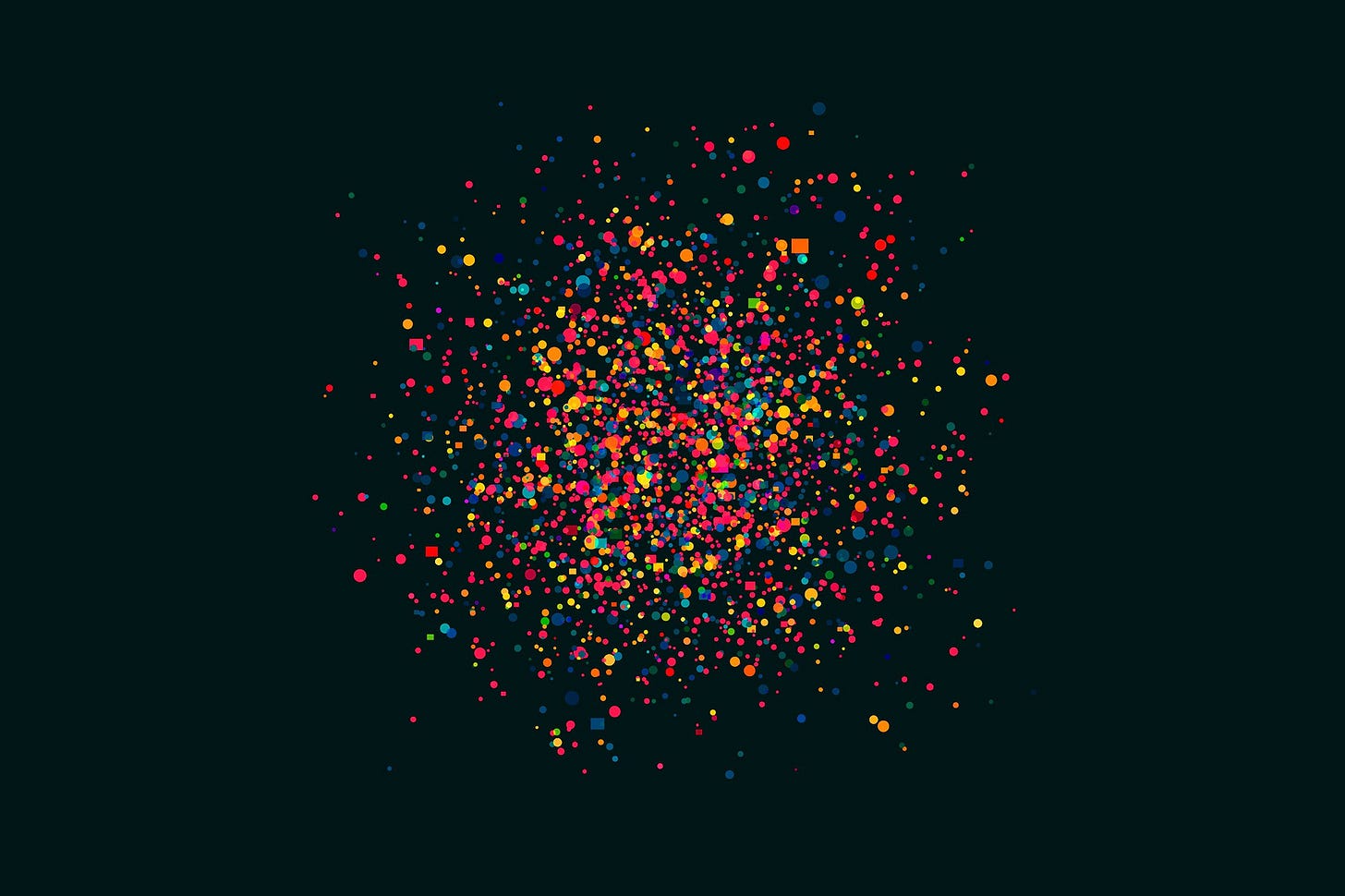# Emotions at scale
The global emotional climate, how millions of tweets reveal unexpected hope, crowdsourcing imagined teen angst and tapping into real Zs emotions about emotion tech

😖 The global emotional climate is stressed with a chance of sleeplessness
Gallup released its 2022 Global Emotions Report which measures positive and negative experiences for over 100,000 people in 122 countries worldwide. You might be surprised to learn that Scandinavian countries aren’t at the top as we’re so used to hearing. That’s because Gallup tries to measure emotions in contrast to the World Happiness Report, which mostly measures other well-being factors like housing, green space, and healthcare.
In Gallup’s survey—a more detailed take on “how are you feeling?”—Central American countries are among the most positive. Residents of Panama, Indonesia (I know not Central America but it’s in second place), Paraguay, El Salvador, and Honduras reported feeling joy, smiling or laughing a lot, and being well-rested. The lowest ranked countries include Afghanistan, Lebanon, Turkey, Egypt, and Nepal. But maybe we shouldn’t think about it as a competition.
For almost every country, experiences of worry, stress, and sadness were all up from 2020. The world felt less well-rested too. The good news? Well, the world is a little less angry.
🙏 Finding hope in millions of tweets
Which emotions drive activism? Sentiment analysis of 34 million tweets about Black Lives Matter tells us that it’s—surprise—positive emotions like hope and optimism. Anger and disgust were in the set to be sure, but less prevalent in tweets with pro-BlackLivesMatter hashtags. The sentiment study doesn’t just give us a sense of what it takes to motivate people to protest, it also shows, according to the Carnegie Mellon-based research team, how natural language processing can counter harmful stereotypes.
😖 What if we crowdsourced teen feelings for Inside Out 2
Disney announced that new emotions will be added to the cast of Inside Out 2, but coyly refrained from saying what those would be. Since dear Riley was just reaching puberty at the end of Inside Out, Screenrant predicts that the movie will expand the emotional repertoire based on psychologist Carol Izzard’s list of 6 additional universal emotions which include Interest, Contempt, Self-Hostility, Shame, Shyness, and Guilt. Izzard is a colleague of psychologist Paul Ekman who consulted on the first film, so it would make sense. But would it accurately reflect today’s teens?
I much prefer the crowdsourced wisdom of Twitter, with more teenage-relevant feelings like horny, gender dysphoria, depression, and being chronically online. Might I also suggest goblin mode and its antithesis, that girl?

🫤 Gen Zs (in Asia) feel meh about emotion tech
Intelligent machines that automatically sense, gauge, learn, and interact with human emotion are no longer rare. Smart Eye (plus Affectiva, a recent acquisition) just this week announced conversational engagement technology that reads emotion using facial expressions and tone of voice in video chat. And that’s just one example. There’s Spotify's voice tone analyzer that suggests playlists based on a user's mood; Honda's smart car, Hana, that detects whether a driver is stressed; Grammarly‘s natural word processing software that gauges the tone of email communication; and, Moxie, a smart toy that interacts with children to help them develop emotional, social and cognitive skills through play-based learning activities.
The internet of emotional things runs on non-conscious data collection (NCDC), that is heart and respiration rates, speech tones, micro-facial expressions, and gestures. All this data is used to assess a mood and tailor the experience.
So how do the youngs feel about tech that reaches deep into your feels? Well, an international team of researchers asked 1,015 Gen Zs about it. According to the results published in Technology in Society, more than 50% of respondents were worried about tech that uses NCDC, but attitudes differed quite a bit depending on gender, income, education, and religion. Zs who identified as male and high income were more accepting of NCDC. Business majors, also more tolerant. Women and lower-income not so much, perhaps because they have more to worry about when it comes to the potential for bias I’d venture to guess. No mention of race or non-binary folks in this report, and the respondents are mostly from Asia, but still interesting and worth further study.
Friday Feeling > Feel Cycling???
This week’s viral TikTok perfectly encapsulates how it feels to scroll social media and, oh, have I heard this one so many times in my research. Even so, there’s not a great emotional concept for this feeling (yet).
It’s that feeling when you catch a glimpse of bitterness in a post by someone you know well but only online, followed by a stranger sounding off on the latest news outrage, then a random cute cat video, then a close friend sharing sad news about their health. You are literally feeling all the feels in rapid succession!
 Tiktok failed to load.
Tiktok failed to load.Enable 3rd party cookies or use another browser
Maybe it’s like code-switching between languages or cultures, except that usually, people talk about that between platforms where you communicate one way on TikTok and another on Instagram. Maybe it’s cognitive dissonance but with emotions instead. Perhaps it is more like rapid cycling, which is characteristic of bipolar disorder, but with less extreme visceral reaction (you’re not really laughing out loud, right?).
Psychologists would call this state mixed feelings, but I’d counter that those feelings are quite distinct in the moment. It’s not ambivalence because the emotions may be nearly simultaneous but not hold the same weight. The emotional reaction could be psychic numbing where we simply shut off feelings as a coping strategy (more common to PTSD), which I’m sure is true for some folks.
And it’s not unlike how emotion AI detects human emotion either—where such a system might sense that now you’re 80% angry, ope now you are 60% happy, and no wait a sec, now you are 72% sad with a dash of surprise and neutral.
So what is this emotion concept? Until we come up with a better term, it’s the guy describing the dominos.
🀹 🀹 🀹 🀹 🀹
That’s all the feels for this week!
xoxo
Pamela 💗


